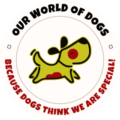
Introduction
The dog-human bond, a relationship between humans and dogs, is as ancient as it is profound. Often seen merely as pets or companions, dogs play a role far more significant in our lives than we usually acknowledge. This article seeks to uncover the less visible yet impactful ways the dog-human bond influences human existence, from biological connections and emotional support to cultural representations and scientific advancements.
Section 1: The Biological Bond
The bond between humans and dogs is deeply rooted in our biological framework, embodying a connection that transcends mere companionship. This bond is not just emotional or social; it’s physiological, influencing our very body chemistry and brain function.
Oxytocin: The ‘Love Hormone’ in Human-Dog Interactions
Central to this biological bond is oxytocin, commonly referred to as the ‘love hormone’. Oxytocin is a neuropeptide produced in the hypothalamus and released by the pituitary gland, playing a crucial role in social bonding, maternal behaviors, and trust. When humans interact with dogs, whether through petting, playing, or even gazing into each other’s eyes, there’s a notable increase in oxytocin levels in both the human and the dog. This phenomenon, sometimes termed a ‘bio-behavioral feedback loop’, underscores a mutually beneficial relationship.
Research demonstrates that this oxytocin-mediated bond between humans and dogs is similar to the bond between parents and their infants. A study published in “Science” found that when dogs and their owners gaze into each other’s eyes, both parties experience a significant rise in oxytocin levels. This effect mirrors the bond that forms between human mothers and their babies during mutual gazing. It suggests an evolutionary adaptation that facilitates and strengthens interspecies social bonding.
Physiological Effects: Reducing Stress and Anxiety
The presence of dogs has a profound calming effect on the human nervous system. Engaging with dogs, particularly through tactile activities like petting or hugging, has been shown to activate the parasympathetic nervous system. This activation results in a reduction of the body’s stress response, characterized by decreased cortisol (the stress hormone) levels and a lowering of blood pressure and heart rate.
Studies have demonstrated that these interactions trigger a relaxation response, reducing physiological markers of stress and anxiety. For example, a study in the journal “Psychosomatic Medicine” found that dog owners had lower blood pressure and heart rate responses to stress compared to non-pet owners, indicating a significant calming effect.
Moreover, the act of petting a dog can increase levels of serotonin and dopamine, neurotransmitters associated with happiness and tranquility. These neurochemical changes not only promote a sense of well-being but also play a role in mitigating symptoms of mental health conditions like depression and anxiety.
Therapeutic Implications
Given these physiological effects, dogs have become integral to various therapeutic practices. Animal-assisted therapy (AAT) utilizes interactions with dogs to promote emotional and physical healing. This therapy has been employed in diverse settings, from psychiatric hospitals to schools, and nursing homes. It leverages the bond between humans and dogs to provide comfort, reduce stress, and encourage social interaction in individuals dealing with mental health issues, developmental disorders, or isolation.
In conclusion, the biological bond between humans and dogs is a complex interplay of emotional and physiological factors. It is not only a testament to the depth of the human-canine relationship but also highlights the potential of this bond in promoting human well-being and mental health. As research continues to uncover the nuances of this connection, the role of dogs in therapeutic settings is likely to expand, offering new avenues for healing and comfort.
Section 2: Dogs in Culture and Society

The role of dogs in the human culture and society is as varied as it is profound. Throughout history and across civilizations, dogs have been venerated, feared, loved, and immortalized in countless ways. This deep cultural connection speaks to more than just a fondness for these animals; it reflects key aspects of human values, beliefs, and societal norms.
Historical and Mythological Representations
In Ancient Egypt, dogs were revered as sacred animals. They were associated with the jackal-headed god Anubis, the god of mummification and the afterlife. This association with death and the afterlife was not ominous but rather protective, symbolizing guidance and guardianship in the journey after death.
In Greek mythology, dogs held a similarly significant place. The most notable example is Cerberus, the multi-headed dog guarding the entrance to the underworld. This fearsome depiction underscores a respect for the dog’s protective instincts and its role as a guardian between worlds.
In Norse mythology, dogs were associated with Freyja, the goddess of love, beauty, and fertility, further indicating the versatility of the dog’s symbolic representation across different cultures – from guardians of the underworld to companions of deities.
Dogs in Folklore and Literature
Folklore across the world is replete with tales of dogs’ loyalty, bravery, and wisdom. In many cultures, dogs are depicted as loyal companions, sometimes with supernatural abilities. These stories often reflect the values and morals of the society from which they originate.
In literature, dogs have been protagonists, symbols, and loyal companions. Famous literary dogs like Argos from Homer’s Odyssey, who waited years for his master Odysseus to return, serve as enduring symbols of loyalty and the deep bond between humans and dogs.
Modern Cultural Depictions
In modern times, dogs have a ubiquitous presence in media and popular culture. They star in films, are central to novels, appear in advertisements, and are all over social media. The role of dogs in contemporary media often reflects current societal values and trends. For instance, the celebration of dogs as heroes in many movies and stories aligns with contemporary values of heroism, loyalty, and unconditional love.
Dogs also play a significant role in shaping social dynamics. They are a common icebreaker in social situations, facilitating interactions and connections among people. In this way, dogs contribute to social cohesion and community building.
The Symbolism of Dogs in Society
The portrayal of dogs in various cultural mediums often symbolizes broader societal attributes. For instance, a society that values loyalty and protection might idolize dog breeds known for these traits. Similarly, the rise in popularity of small, companion dog breeds in urban settings reflects changing lifestyles and the growing importance of pets as family members.
Dogs have been and continue to be a significant part of human culture and society. Their representations in history, mythology, folklore, literature, and modern media are not just reflections of human affection for these animals but are deeply interwoven with human values, beliefs, and societal norms. Understanding the cultural significance of dogs can provide insights into the human condition and the evolving nature of human-animal relationships.
Section 3: Canine Contributions to Science and Discovery

Dogs have made indispensable contributions to the field of science and discovery, often in ways that are not immediately apparent. Their role spans various scientific domains, from behavioral psychology to genetics, and extends into therapeutic applications that have revolutionized the way we approach health and wellness.
Behavioral Psychology and Pavlov’s Legacy
Ivan Pavlov’s experiments with dogs are perhaps the most famous example of canines contributing to scientific understanding. Pavlov’s work in the early 20th century with dogs led to the discovery of the conditioned reflex, a cornerstone in the field of behavioral psychology. His experiments, where he demonstrated that dogs could be trained to salivate at the sound of a bell when it was consistently paired with the presentation of food, laid the groundwork for what would later be known as classical conditioning. This concept has had profound implications, not just in psychology, but also in understanding human learning and behavior modification.
Canine Genetics and Medical Research
In the realm of genetics, dogs have been crucial in understanding the genetic underpinnings of various diseases. The canine genome was fully sequenced in 2005, and since then, it has been a valuable resource in genetic research. Dogs suffer from over 350 genetic disorders, many of which are similar to human conditions. By studying these conditions in dogs, researchers can gain insights into the human versions of these diseases.
For instance, the study of bone cancer in dogs has informed the understanding and treatment of the disease in humans. Similarly, research into genetic causes of canine epilepsy, blindness, and heart disease has provided clues to these conditions in humans, paving the way for new treatments and therapies.
Dogs in Therapy and Health
In therapeutic settings, dogs have played a pioneering role. Their ability to detect diseases such as cancer through scent has been a remarkable development in medical science. Dogs have been trained to detect various types of cancer with high levels of accuracy by smelling breath, blood, or urine samples. This non-invasive detection method could revolutionize early cancer screening processes.
Additionally, dogs have been instrumental in psychological and emotional therapy. Their involvement in treating conditions like Post-Traumatic Stress Disorder (PTSD), anxiety disorders, and depression has been groundbreaking. The presence of therapy dogs has been shown to reduce stress and anxiety levels in patients, improve mood, and even decrease the perception of pain. In settings such as hospitals, schools, and disaster recovery areas, therapy dogs have been invaluable in providing comfort and emotional support.
The contributions of dogs to science and discovery are profound and multifaceted. From Pavlov’s pioneering work in psychology to cutting-edge genetic research, dogs have played a crucial role in advancing scientific knowledge. Furthermore, their role in therapy and health demonstrates their versatility and the unique ways they can contribute to human well-being. Understanding and appreciating these contributions not only underscores the importance of dogs in scientific progress but also highlights the deep and mutually beneficial relationship between humans and dogs.
Section 4: The Unseen Emotional Anchors

The emotional impact of dogs on human lives is profound, yet often remains an understated aspect of our relationship with them. More than mere companions, dogs provide a unique form of emotional support that is both therapeutic and transformative.
Dogs as Emotional Companions
Dogs have an innate ability to sense and respond to human emotions, making them exceptional companions during times of emotional distress. Their presence can offer comfort during periods of loneliness, grief, or anxiety. For instance, in situations of loss or bereavement, a dog’s presence can provide a soothing and non-judgmental source of comfort. Similarly, during moments of joy and celebration, dogs often share in the excitement and happiness of their human counterparts, reinforcing positive emotions.
Psychological Studies on Human-Canine Bond
Numerous psychological studies have investigated the impact of dogs on human emotional health. Findings consistently show that dog owners often exhibit lower levels of stress and depression compared to those without pets. The act of caring for a dog can provide a sense of purpose and routine, which is particularly beneficial for mental health.
Research also indicates that the bond between humans and dogs can enhance social support, providing an additional buffer against psychological stress. For many, the relationship with their dog is a significant source of emotional support, sometimes surpassing that provided by human relationships.
Dogs and Individuals with Disabilities
For individuals with disabilities, dogs can play an even more crucial role. Service dogs, trained to assist with specific tasks, not only provide practical assistance but also offer emotional support. They can help reduce anxiety in social situations, provide a sense of security, and increase independence, thereby boosting self-esteem and overall quality of life.
The Role of Dogs with the Elderly
Among the elderly, dogs can be a lifeline to the outside world. They encourage exercise and social interaction, which are vital for physical and mental health. The companionship of a dog can be particularly powerful for those who may be isolated or have limited human contact. Studies have found that the presence of a dog can reduce feelings of isolation and loneliness in the elderly population.
Dogs in Transitional Life Phases
During challenging life transitions, such as moving to a new city, starting a new job, or undergoing a significant personal change, dogs can provide a consistent and comforting presence. Their unconditional acceptance and non-judgmental nature can make these periods of change more manageable and less stressful.
The emotional role of dogs in human lives is vast and multifaceted. They are not just pets but emotional anchors, providing unwavering support, comfort, and unconditional love. This section of the article would bring to light personal stories and scientific research that highlight the emotional significance of dogs, revealing how they enrich our lives in ways that often go unnoticed but are deeply felt.
Summary
In the human life, dogs weave an intricate pattern of influence and connection that touches every aspect of our existence. From the gentle nudge of a wet nose to the comforting rhythm of a tail wag, dogs enrich our lives in ways that are both profound and subtle. This article has explored the diverse and often unseen roles that dogs play, highlighting their impact on our biological rhythms, cultural narratives, scientific understanding, and emotional health.
Dogs, with their quiet, unassuming presence, have a remarkable ability to synchronize with our emotions and life rhythms. They are attuned to our moods, responsive to our needs, and consistently present in moments of joy, sorrow, and discovery. In exploring the depth of this bond, we uncover a fascinating interplay between species that has evolved over thousands of years. This relationship not only enhances our understanding of dogs but also offers a mirror to our own humanity.
The cultural narratives around dogs are as varied as they are rich, reflecting the values and beliefs of societies across time and space. Dogs have been revered as deities, celebrated as heroes, and cherished as companions. They hold a special place in our myths, our art, and our everyday lives, serving as symbols of loyalty, courage, and unconditional love.
In the realm of science, dogs have been silent yet pivotal contributors. Their role in groundbreaking research has expanded our knowledge in fields ranging from genetics to psychology. They have aided in medical discoveries, offered insights into behavioral science, and played a crucial role in therapy and healing.
Perhaps most significantly, dogs are emotional anchors in our lives. They offer comfort without words, understanding without judgment, and companionship without conditions. In their eyes, we find empathy; in their loyalty, we find reassurance; and in their playfulness, we find joy. They remind us of the simplicity of love and the importance of being present in the moment.
As we close this exploration into the world of dogs and their impact on human life, we are reminded of the profound interconnectedness between our species. Dogs teach us about compassion, resilience, and the pure joy of living. They ask for little, yet give so much, enriching our lives in countless ways.
In understanding and appreciating the multifaceted roles of dogs, we not only deepen our connection with these remarkable animals but also gain greater insight into ourselves. Dogs are not just pets; they are companions on our journey, teachers of life’s lessons, and mirrors to our souls. As we walk side by side with our canine friends, we discover the beauty of unspoken bonds and the power of unconditional love. So here’s to our dogs – the unsung heroes, the silent therapists, and the loyal friends – who make our world a little brighter and our hearts a little fuller.
